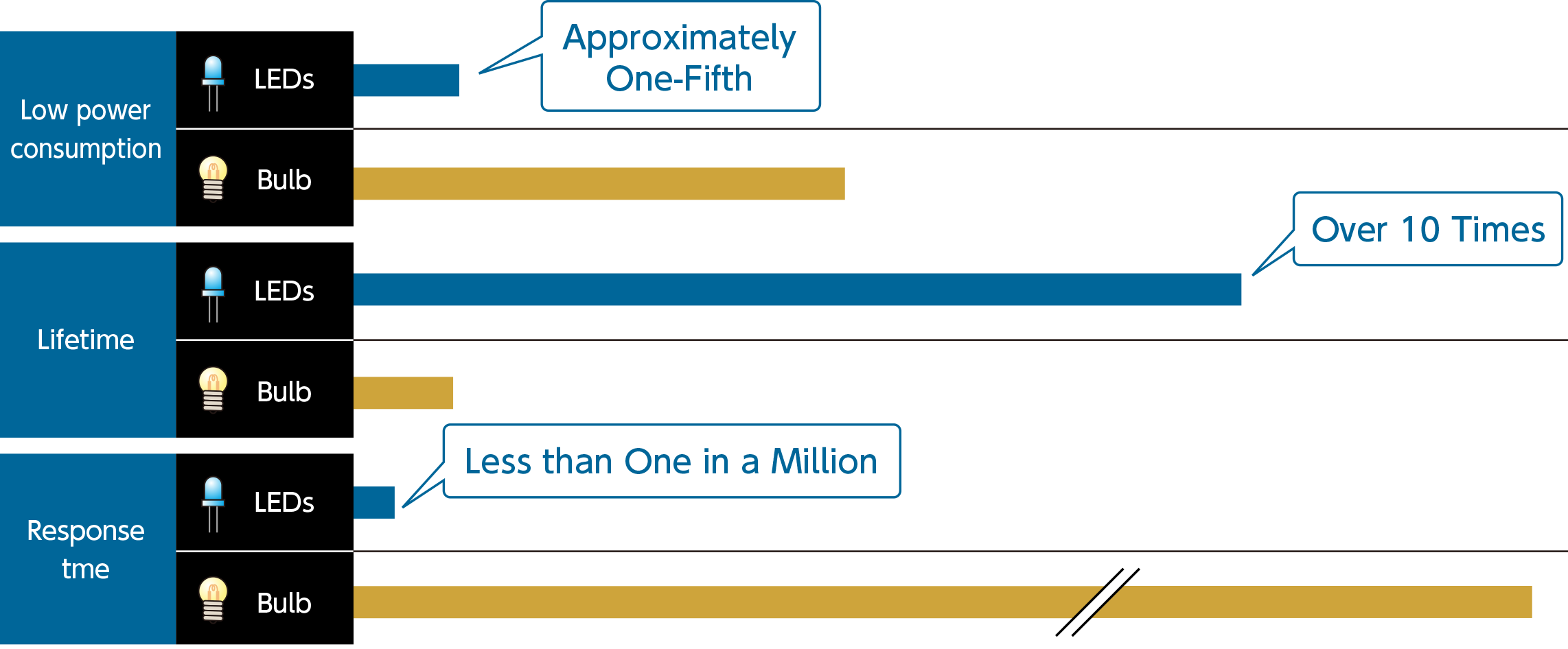LED
LEDs (Light Emitting Diode) are semiconductor device (electronic component) that emit light when voltage is applied.
The Mechanism of LED Light Emission
An LED is made up of a semiconductor with a structure called a pn junction. When a current is applied, positive charges, or "holes," from the p-type semiconductor and negative charges, or electrons, from the n-type semiconductor begin to move towards each other.
When the positive holes and negative electrons meet at the junction, they neutralize each other's charges. The leftover energy from this process is converted into light energy, causing the LED to emit light.
Characteristics of LEDs
- Low
power
consum
ption - Low Heat Emission
- Long life
- Inherent Color
Self-Emission - Fast Response Time
- Brightness Control
- Space-saving
- Environ
mentally
Friendly

Expanding the Possibilities of LEDs through Development that Meets Needs
In addition to lighting, LEDs are expected to be deployed in various fields such as automotive, communications, plant cultivation, and medical care.
We will continue to develop products in line with our customers' needs and overcome various challenges to improve product quality, further expanding the possibilities of LEDs.
-
Optical Communication
High Capacity
-
Lighting & Display
Low Power Consumption
-
Medical & Measurement
High Reliability
-
Signals
High Visibility
-
IT Equipment
Low Power Consumption
-
Mobile Phones
Low Power Consumption
-
Full-Color Display
High Resolution
-
Automotive Products
Mercury-Free, Energy-Saving
